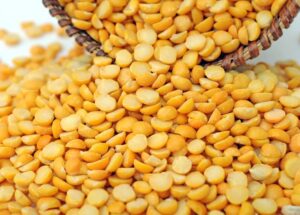
China has called on the international community to focus on real mediation to achieve peace in Ukraine instead of wasting time on discussions.
“Over the past seven days, the Ukrainian issue has been the subject of three Council meetings. While we are spending time and energy on further discussions of this issue in the Council, we should invest more time and energy in mediation and promoting peace talks,” said Chinese Deputy Permanent Representative to the UN Geng Shuang during an emergency meeting of the UN Security Council initiated by Ukraine after a massive missile and drone strike by Russia on the night of July 31.
China stressed that the crisis in Ukraine is in a critical phase and called on all parties to make every effort to de-escalate and return to the political process. In particular, the Beijing representative outlined three key steps: prioritizing humanitarian needs and protecting civilians, immediate de-escalation on the battlefield to allow for meaningful negotiations, and an active role for the international community in creating conditions for dialogue.
The Chinese side stressed that it would continue to promote the settlement, guided by the four principles formulated by Chinese President Xi Jinping.
As reported, Ukraine initiated an emergency meeting of the UN Security Council in response to the latest escalation of terror by Russia, which led to the death of people and destruction in Kyiv.
As of now, at least 31 civilians, including five children, are known to have been killed in the attack on Kyiv on July 31. Another 159 civilians, including 16 children, were wounded in the capital.

Foreign direct investment (FDI) in mainland China’s economy fell by 15.2% in the first half of the year compared to the same period last year, to 423.23 billion yuan ($59 billion), according to the Ministry of Commerce.
The manufacturing sector attracted 109.06 billion yuan, while the service sector attracted 305.87 billion yuan.
At the same time, FDI from ASEAN countries grew by 8.8% in January-June, from Switzerland by 68.6%, from Japan by 59.1%, from the UK by 37.6%, from South Korea by 2.7%, and from Germany by 6.3%.
As reported, FDI fell by 27.1% in 2024 to 826.25 billion yuan. This is the largest decline in the history of calculations (since 2008).

UzTemiRContainer, part of Uzbekistan Temir Yulary, held talks with a number of Asian logistics operators on the development of the China-Kyrgyzstan-Uzbekistan-Afghanistan multimodal corridor on the sidelines of the Investment and Trade Fair in Lanzhou, China.
The meeting was held in a quadrilateral format with the participation of Gansu International Logistics Group, the Afghan diplomatic mission in China, and Xinjiang Union of International Railway Logistics.
The key topics were the launch of return container shipments from Afghanistan and Uzbekistan to China, increasing the route’s capacity, and developing logistics infrastructure in Central Asia, including the construction of terminals in Uzbekistan and Kyrgyzstan.
On the sidelines of the forum, a separate bilateral meeting between representatives of Uztemiryulcontainer and Gansu International Logistics Group took place, during which the parties visited the facilities of the international dry port in Lanzhou.
They inspected container and bulk terminals, car handling areas, and a refrigeration complex for working with refrigerated containers. The delegation from Uzbekistan also familiarized itself with Gansu’s digital solutions in the field of logistics management.
Following the talks, the companies announced the launch of a pilot container route between China, Kyrgyzstan, Uzbekistan, and Tajikistan/Turkmenistan. The first train is scheduled to depart in the third quarter of 2025.
The parties confirmed their intentions to expand cooperation in the field of multimodal transport and expressed their readiness to increase the volume of container transport in the Eurasian direction by at least 1.5 times by 2030.

Chinese authorities last Saturday began construction of a giant hydropower plant on the Tibetan Plateau on the Yarlung Tsangpo River, Western media reported. The Yarlung Tsangpo River, one of South Asia’s largest waterways, also flows through India and Bangladesh and joins the Ganges River. It is called the Brahmaputra in India and the Jamuna in Bangladesh.
Li Qiang, Premier of the State Council of the People’s Republic of China, attended the project’s launching ceremony. The electricity generated by the hydropower plant is planned to be supplied outside the region; it should also meet local needs.
According to the calculations of the construction company Power China, the hydropower plant will be able to produce 300 billion kWh of electricity annually. The cost of the hydroelectric structure is estimated at $167.1 billion.
The media note that upon completion of construction, this facility may surpass the Three Gorges Dam Hydroelectric Power Plant on the Yangtze River in Hubei Province – the largest power plant in the world.
In January, Indian authorities said they had raised concerns with China about the project and urged Beijing to ensure there was no harm to people living downriver. New Delhi promised to protect Indian national interests. For its part, the Chinese Foreign Ministry said the hydropower plant would not adversely affect downstream regions. The ministry added that it would keep in touch with the countries through which the Yarlung Tsangpo also flows.

The administration of US President Donald Trump is stepping up pressure on key allies in the Indo-Pacific region, particularly Japan and Australia, demanding clear commitments on their role in the event of a war between the US and China over Taiwan, the Financial Times reports, citing informed sources.
“US Deputy Secretary of Defense for Policy Elbridge Colby has been actively raising this issue in recent months at meetings with representatives of the Japanese and Australian defense ministries. According to sources, this has surprised allies, as the US itself does not provide Taiwan with security guarantees,” the report said.
“Specific operational planning and exercises that are directly applicable to an unforeseen situation in Taiwan are being advanced with Japan and Australia,” one of the publication’s sources said.
However, the Japanese Ministry of Defense noted that the issue of an emergency situation in Taiwan is hypothetical and that responses to it should be based on national and international law. The Australian Embassy in the US declined to comment.
According to the publication, Colby’s efforts are part of Trump’s agenda to “restore deterrence and achieve peace through strength,” which includes calls for allies to increase defense spending.
It is also noted that Colby advocates revising the AUKUS security agreement, which allows Australia to acquire nuclear submarines, and calls on European allies to reduce their military presence in the Indo-Pacific region and focus on the Euro-Atlantic direction.

The domestic market for peas is seeing a decline in prices—before the start of the new season, quotations are falling by several percent, but more and more traders are showing interest in this crop for the first time, which could lead to an increase in demand and prices, according to the analytical cooperative Pusk, created within the framework of the All-Ukrainian Agrarian Council (VAR).
“We are currently seeing a slight decline in the price of peas before the start of the season. Theoretically, prices could fall further to 13,500–14,000 UAH/ton. But at the same time, many traders who previously did not work with peas at all are starting to actively engage in purchases. Niche crops usually offer good margins, especially for export. This motivates the market,” analysts say.
They emphasize that in 2025, the area under peas increased: last year, farmers sowed 212,000 hectares, while this year — over 250,000 hectares. However, even these volumes remain relatively small compared to other crops.
At the same time, the opening of the Chinese market is an important factor: demand from China could quickly absorb all the additional production.
“We have seen some growth in acreage, but not millions of hectares. China has opened its market, and a significant portion of the peas will likely go there. That means that an additional 40,000 hectares of pea acreage is not such a large resource. In this situation, a deficit is quite possible — demand will exceed supply,” analysts predict.
After a short-term decline, pea prices may stabilize and rise in mid-July-August. A similar situation already occurred last year, when prices began to rise instead of falling as expected.
“The pea market may again see levels of 15,000–16,000 UAH/ton. Everything will depend on logistics, weather conditions, and the pace of Chinese imports,” concluded Pusk.